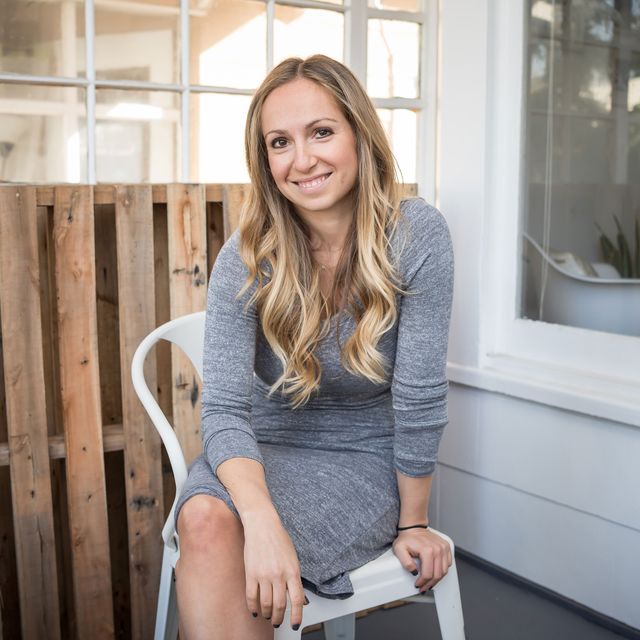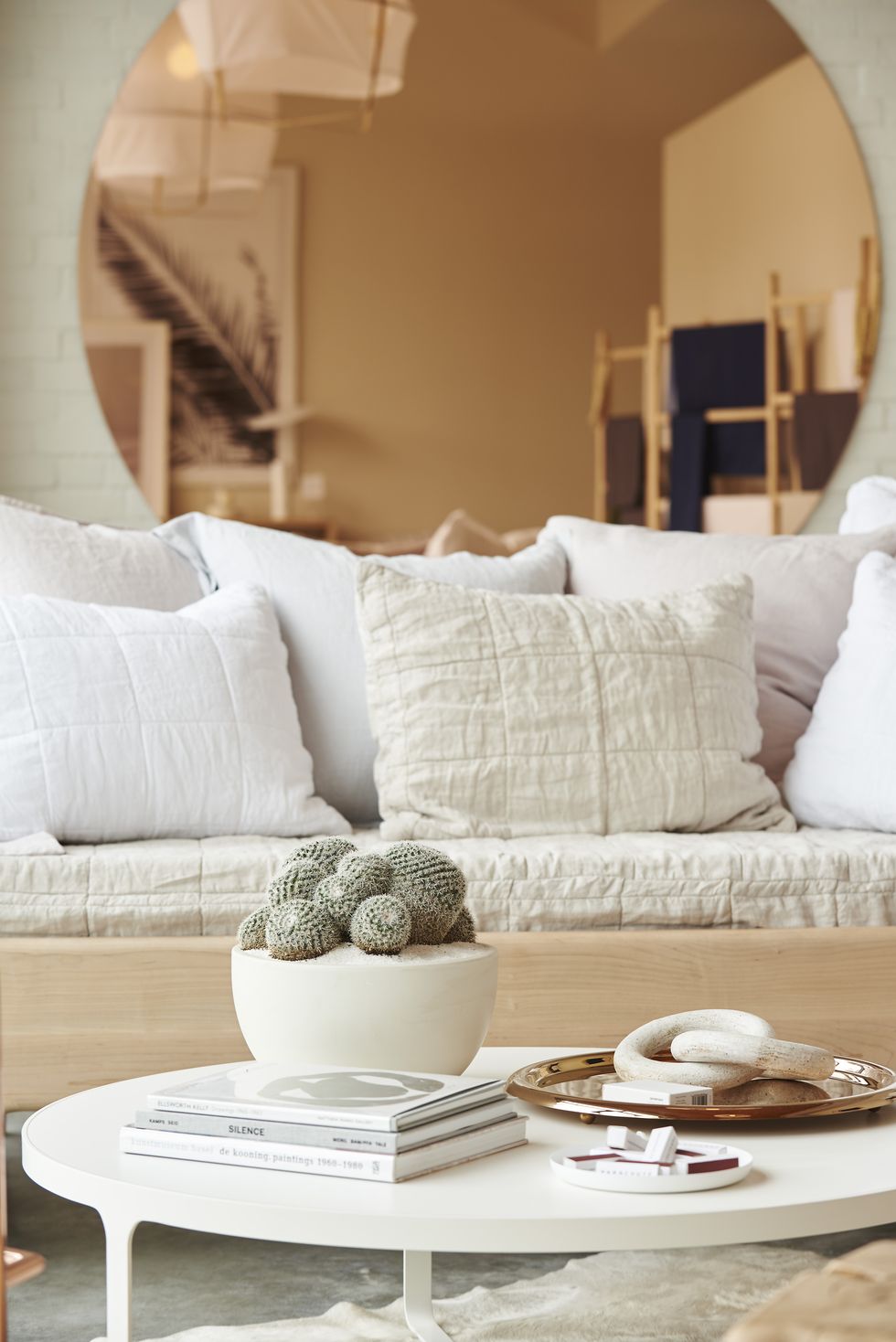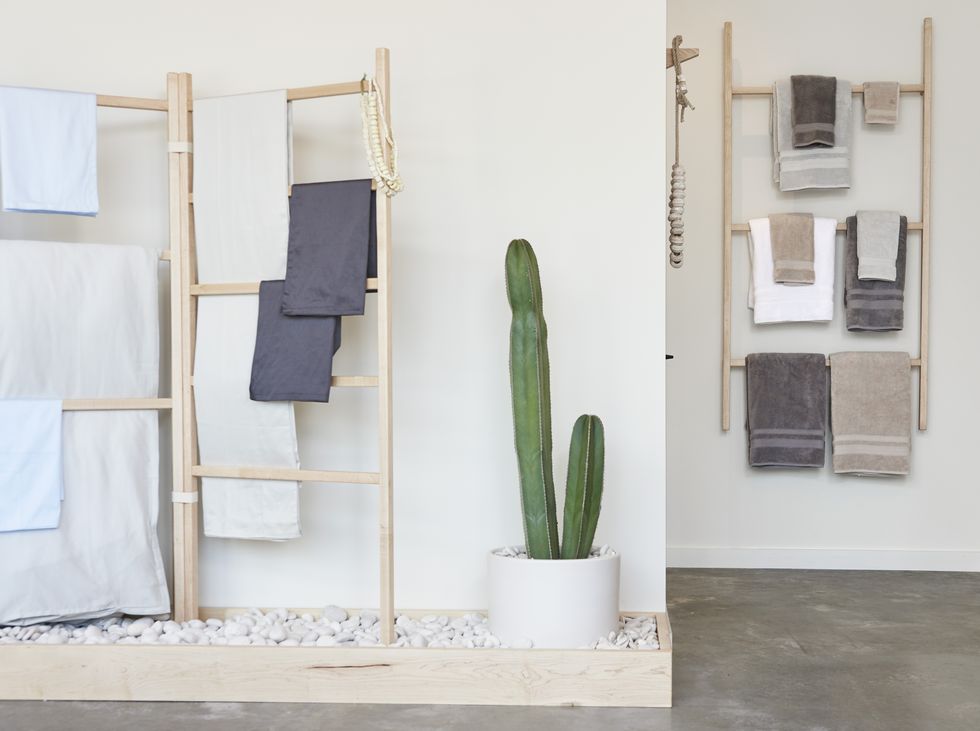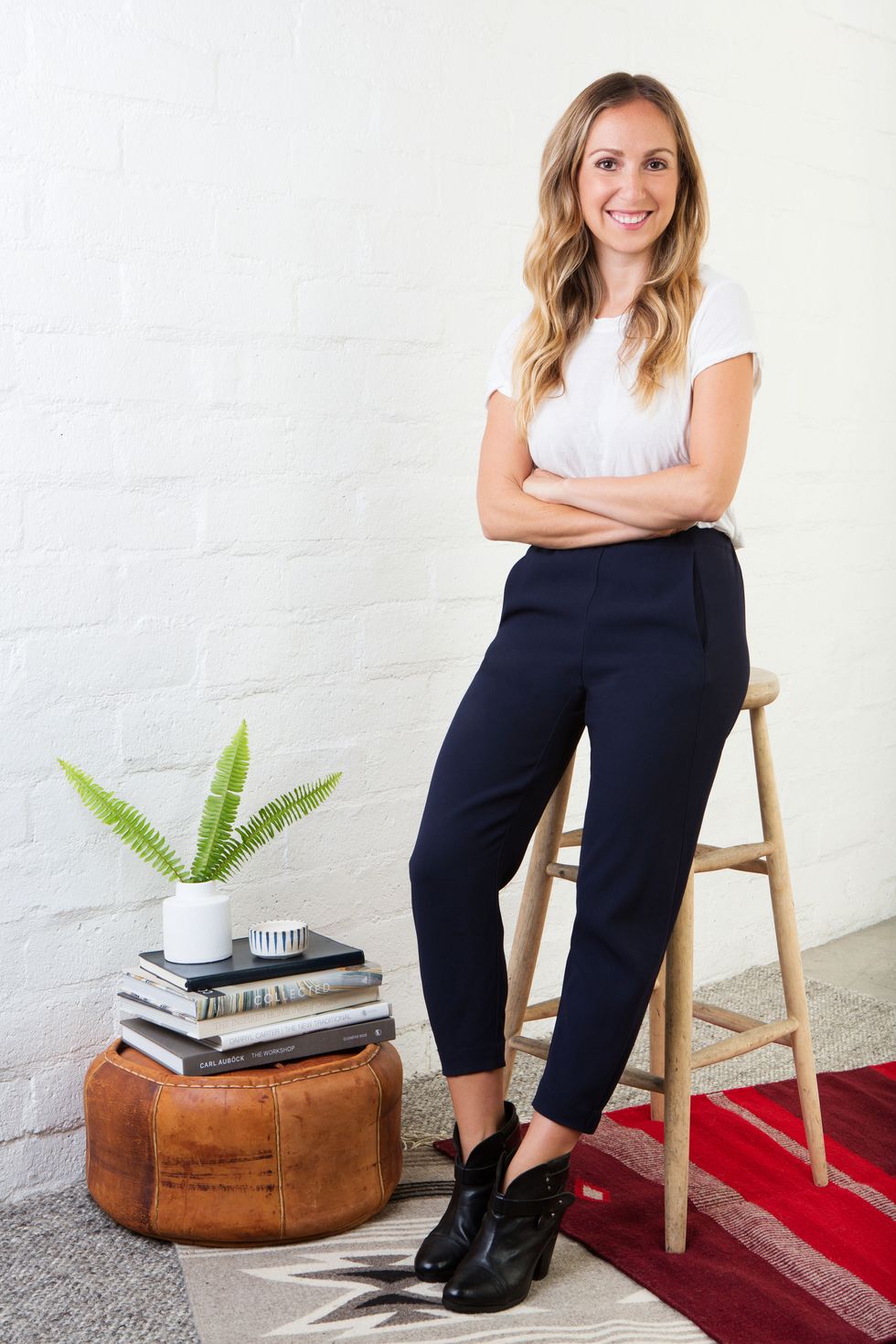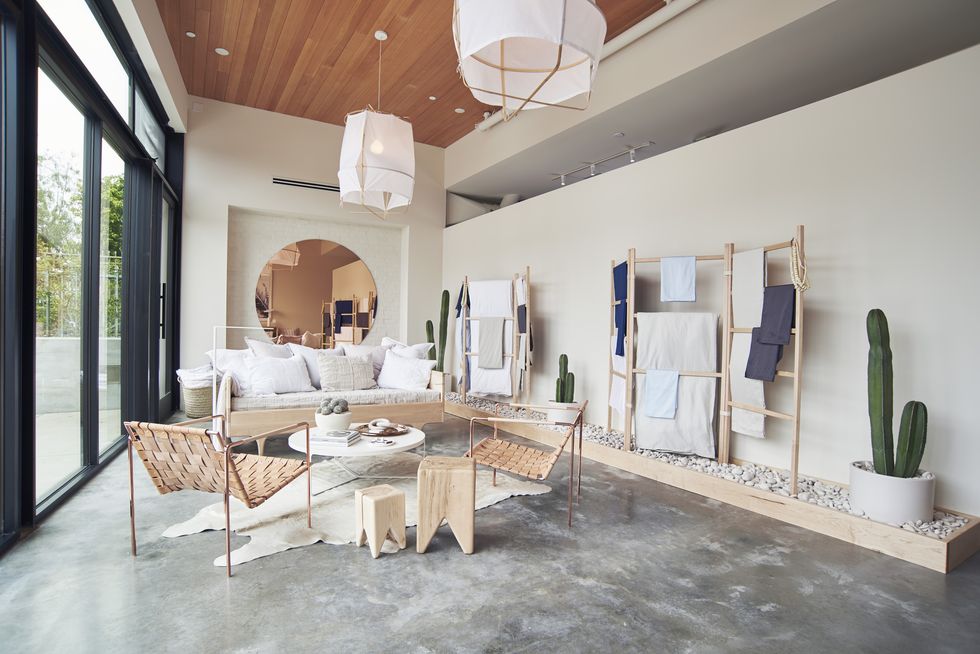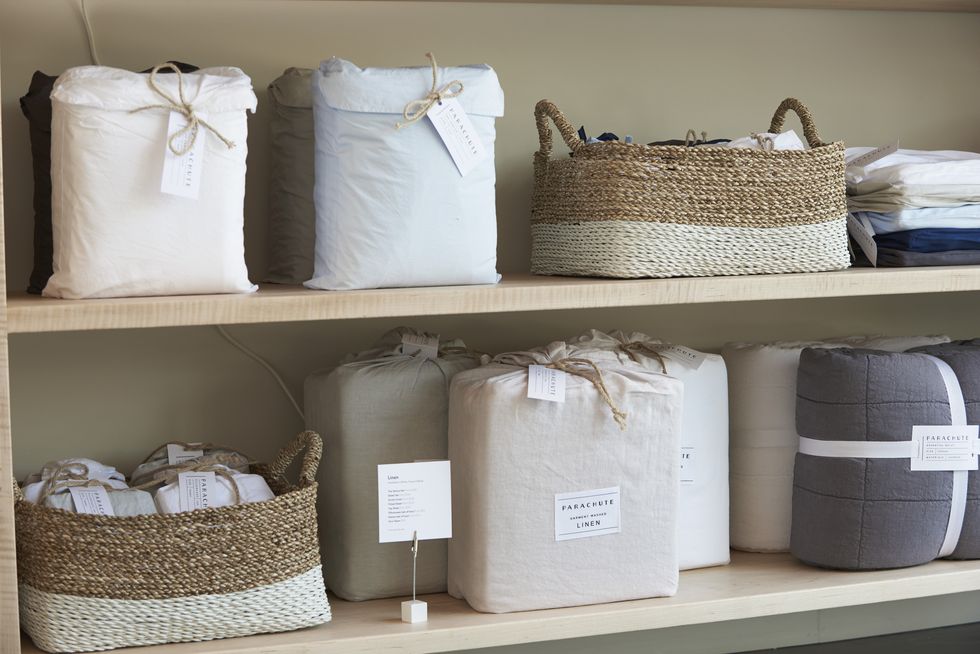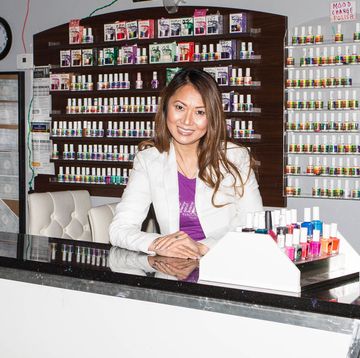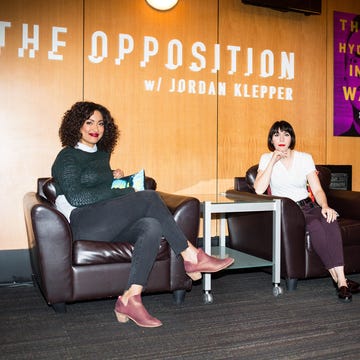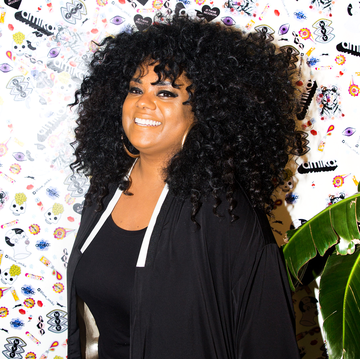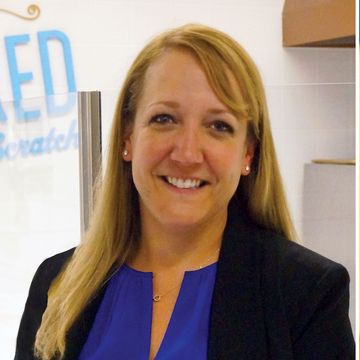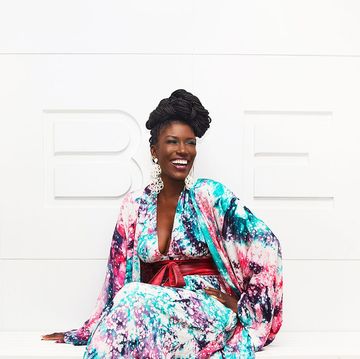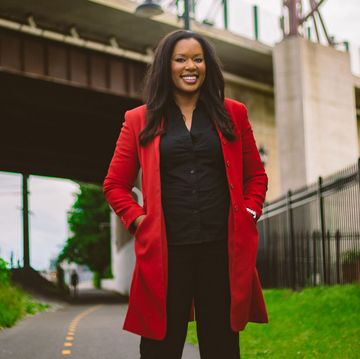Ariel Kaye always felt happiest creating inviting spaces — whether playing hostess to sleepovers as a kid growing up in Santa Monica, California, or decorating her friends’ apartments. Kaye spent seven years working in PR and advertising before, at age 29, she founded Parachute, an online ecommerce company devoted to selling luxury home essentials at affordable prices. Parachute started with simple sheet sets — made by craftsmen in Italy and sold in bundles starting at $89, or à la carte for less — and has expanded to include linens and accessories for every area of the home.
During my sophomore year at NYU, I spent six months in Italy. As a way to practice my Italian, I would go to the markets to look at beautifully detailed fabrics and talk to the artisans about how they made them. I’d hear stories from sons who were running businesses started by their great-great grandfathers. The trip inspired me to start a design blog.
After graduating from NYU in 2006 with a degree I created myself called media, power, and persuasion, I worked in beauty and fashion PR for a couple of years. I decided to go back to school largely because I loved learning, and I still wasn’t sure that I had found the career I really wanted to settle into. During undergrad, I had a media theory class that was really interesting to me so I decided to get my master’s in media studies at The New School.
I had a friend in class who worked at a big ad agency at the time. She was telling me about account planners at her agency and explained that you worked with the creative teams on advertising campaigns. Your job was to be the voice for the consumer as you work with big brands. She made an introduction at the agency, and after graduation, I started working as an account planner.
By this time, I was posting daily on my design blog and doing more DIY projects around my home, which led to friends and family asking me to help them redecorate their apartments. It got to a point that when people asked me what I did professionally, I wanted to say I was an interior designer.
This was around 2012 and I had a lot of friends in New York and L.A. who were joining startups or starting their own businesses. They would unapologetically cancel social plans to work nonstop, and they loved it. I realized that I wanted to be in that small, exciting, thriving community environment.
I had a moment in Bed Bath & Beyond that year that led to an epiphany. I went in looking for bedding and found myself surrounded by stacks and stacks of products that all looked the same, and no one could tell me what anything was. I wanted comfortable, quality sheets, but I didn’t want to spend an arm and a leg. I also didn’t want to buy something cheap for the sake of buying it and end up unhappy. I was overwhelmed, confused, and frustrated. I left not knowing what to buy, and I got angry. I’m going to use [sheets] more than any other product in my home, but no one is asking me how I sleep at night.
When I talked to friends about it, I realized everyone could relate. All I had to say was, “Ugh, I was bedding shopping today…” and I was instantly met with, “Ugh, that’s the worst!” or, “Ugh, I don’t buy new sheets until there are holes in them.” I also discovered that no one had an association with brands when they bought their sheets. As someone who built brands in advertising, I recognized a true business opportunity.
People who want luxury bedding have been forced to pay too much for it. There is insane markup in this category — there are bedding brokers, licensing fees, and all kinds of intermediaries between the manufacturers and the stores. By buying directly from the manufacturer and delivering straight to the consumer, I could circumvent all those markups and pass along those savings to customers.
In December 2012, I decided that I would get myself through the holidays working full-time and then I would move on. I had a lot of friends who introduced me to more entrepreneurs. I also started meeting people who worked in textiles to find out more about that industry. The next step was putting together a pitch deck with my initial thoughts and ideas around the business, and gathering research. Friends who had experience with creating business plans and pitch decks provided feedback, but I also trusted my gut.
I went to probably every single store in New York City that sold home goods and acted like a shopper. I looked at the products, took pictures, and talked to employees and asked what their best sellers were. I also put together questions for friends and family to answer to help me learn more about consumer behavior in this area.
I barely slept. I was so excited and energized by this idea that it was all I wanted to do. I stopped seeing friends. For most people around me, it was more like, “Oh geez, what is she doing? She’s going off the deep end.” People would tell me, “You’ve got a really great job and you’re doing really well. Why would you leave it to do something you’ve never done before?” I’ll be the first to admit that my naiveté is what allowed me to take the risk.
In February 2013, I finalized a business plan and quit my job. The first thing I did was travel throughout Europe [using savings] to visit 15 textile factories. When I asked people, "What do you think of when I say the best bedding in the world," so many people had a quick answer: Italy. It confirmed what I already knew from my time there.
I was 28 at the time, and everywhere I went, people were very much humoring me, like I was this big-dream girl from America that somehow landed on their doorstep. I found one manufacturer in Italy that didn’t require huge minimum orders that I couldn’t afford. They took a risk and produced my first samples. I work with the same manufacturer today and they often remind me how surprised they are that we’re successful.
I decided to move back to L.A. in May to start Parachute, a name I came up with after months of searching thesaurus.com and considering every iteration of the words dream, home, and sleep. I wanted something that evoked a visual feeling. When you make your bed and billow the sheets, it reminds me of a parachute.
Bedding sizing is standardized, so after choosing the fabric, I focused on the aesthetic. I took a modern approach to classic bedding design, selecting three neutral colors — white, sand, and powder — making all our pillowcases with a back envelope closure, and I decided to offer bedding as separates, enabling shoppers to create his or her own set piece by piece.
I also knew that in starting a business, I’d have to sacrifice friendships, dating, everything, for at least two to three years. And the thought of doing that near family and people who would love me no matter what was comforting.
One of the most exciting moments of my life was when I called my parents to tell them I got a promotion at the ad agency, and I could fully support myself in New York City and start paying them back for all they had given me. They had been supplementing my income so I could more easily afford to live there. So to need to ask my parents for their help again [to start Parachute] was one of the more difficult things I had to do. I believed in the business — and I thought I could pay my parents back again — but it was humbling.
I started Parachute with a combination of my personal savings, a loan from my parents, and a few investments from friends and family, about $30,000 total. About four or five months in, I realized being an entrepreneur was going to be infinitely harder than I expected. I had moments of doubt and questioned if I had made the right decision. Not having a partner meant I had to do everything on my own. I’d wake up and see my to-do list and just want to go back to bed. Being an entrepreneur, you can have the best and worst day of your life within the course of 30 minutes. I looked to small wins to stay motivated, such as receiving samples in the mail or getting great feedback.
I had been in touch with an accelerator in L.A. called Launchpad since February 2013. What an accelerator provides you with is a place to work with other startups, mentorship with experienced entrepreneurs, and access to investors. Every six weeks, I sent them long updates on the business. They kept saying, “Show me more progress.” I was very persistent and they accepted me into the program at the end of October 2013. All of a sudden, working 'til 3 a.m. was fun because there were five other companies working with me. I didn’t feel like I was on this island of one anymore.
I spent about a year hearing “no” from investors. I sat in so many rooms full of men who had never thought about buying bedding and couldn’t relate. In every meeting, I learned how to fine-tune my pitch. I received feedback that the way I talked about Parachute was too relaxed and my overall energy was too chill. Potential investors were mistaking this as a lack of enthusiasm for what I was working on. They needed to see I was a little bit crazy. I shifted my pitch and made sure they knew I was never going to give up.
I launched Parachute in January 2014. I made my first hire one month later. We were growing slowly all by word of mouth. Then a few months later, we were mentioned in a Wall Street Journal article. We went from doing about three to five sales a day to more than 50. We sold out of our inventory and there was a three- to four-month lead time for new products. I thought we had sabotaged ourselves.
I had to send personal emails out to people saying, “Thank you for your order, we appreciate your support, but we can’t fulfill it.” Some people were really upset. They’d write back, “You shouldn’t run a business if you can’t deliver!” But thankfully the majority of the responses were supportive. It took about six months for us to have a solid understanding of how to project our inventory purchases. Keeping up with demand is an art and a science dependent on many factors — from seasonality to press mentions.
At first, all of the product ideas came from my brain. I’m inspired by the rituals in the home — going to bed, taking a shower, having your morning coffee — all of those things that are so important to comfort. Now we have two designers who I work very closely with, and a staff of 28 who work out of our Venice, California, office and showroom. As a business, we want to be your one-stop shop for home essentials that enhance your life. That looks like having retail stores and partnering with hotels.
For the first nine months, I answered every phone call and responded to every email. I was able to ask our customers questions about what products they liked, what else they wanted, and how we could make the experience easier for them. A lot of our new products come from customer requests. For example, one of our most frequently asked questions has been, “Where do you buy a duvet insert?” So we decided to launch our own.
There are so many pinch-me moments as a result of our customer feedback. I remember a note from a woman who worked crazy hours at a hospital and she said her grueling days were made much better knowing she has a comfy place to sleep at night. When people reach out to just say thank you, there’s nothing better.
Correction: An earlier version of this article stated that Parachute has 18 employees. It has 28.
Get That Life is a weekly series that reveals how successful, talented, creative women got to where they are now. Check back each Monday for the latest interview.
Follow Heather on Twitter.
